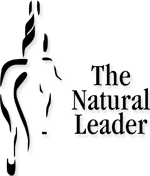 At one time it was common to refer to breaking a colt. Many believed that you had to break the colt’s spirit by trapping, restraining and making them to comply to your requests. Fortunately we have learned there are easier and safer ways to work with horses. Today you are more likely to hear someone refer to starting a colt, words that better illustrate the positive changes in behaviour we wish to create as we develop a relationship.
At one time it was common to refer to breaking a colt. Many believed that you had to break the colt’s spirit by trapping, restraining and making them to comply to your requests. Fortunately we have learned there are easier and safer ways to work with horses. Today you are more likely to hear someone refer to starting a colt, words that better illustrate the positive changes in behaviour we wish to create as we develop a relationship.
The saying “make the right choice comfortable” is a reflection of our learning. When we apply that concept in working with a colt, we adapt our behaviours to what we know about horses so being with us becomes a good experience and accelerates a horse’s learning.
While we share the same fight or flight responses of the horse connected to the amygdala part of the brain, the same does not apply in our awareness of subtle changes in our environment. Unfortunately, it is our greater capacity to reason in the higher functions of the brain that get in our way. We tend to clump detail into broad strokes often creating something far greater than it is. Rather than seeing a series of connected events or signals we jump to the end result conjuring up endless scenarios in the process, letting the ‘what ifs’ create a noise that drains our energy and drowns the opportunity for insight and awareness.
Insight is the space required to understand, decide, recall, memorize and inhibit, in order to make a change in our behaviour. It is the quiet place where we hear the signal above the noise and see the opportunity in change.
David Rock expands on the concept of why positive change is hardest in his webcast “The New Science of Change – Connecting Leadership Development and Neuroscience.” Rock defines thinking as energy intensive and suggests our brain’s intrinsic goal is to avoid effort, the reason why we so quickly connect to what is wrong with change, we don’t have to think.
Thinking requires effort, effort equates to discomfort, discomfort produces a level of uncertainty, uncertainty reduces our capacity to reason and tends to steer us back toward what is certain. It is this chain of action, reaction that makes it difficult for us to accept change, even when change is for the best.
Rock suggests we can rewire the circuits of our brain if we take just 10 seconds a day to focus on a positive outcome. Basically the same concept we apply in working with a horse – breaking new information down into small repeatable bites. Asking for one thing at a time building on competence until actions become behaviours.
It is these small bites of information we introduce when making the parallel between horsemanship, leadership, communication or team learning. Because the horse so quickly mirrors our actions and reactions they become the perfect measure of how easily or how difficult we make adapting to change. In working with a horse an individual often discovers that quiet space for insight when they start to become aware on how their actions impact another being. Insight that makes room for positive change.


 When introducing leadership through horsemanship I speak to a horse responding to us or their surroundings based on instinct, the desire to stay alive. It is a value I have seen a horse demonstrate, with varying degrees of commitment, time after time. Their behaviour reflects a core value.
When introducing leadership through horsemanship I speak to a horse responding to us or their surroundings based on instinct, the desire to stay alive. It is a value I have seen a horse demonstrate, with varying degrees of commitment, time after time. Their behaviour reflects a core value. “Make the right thing easy.”
“Make the right thing easy.”